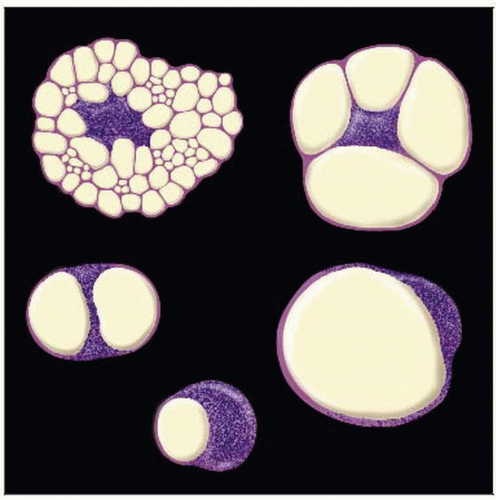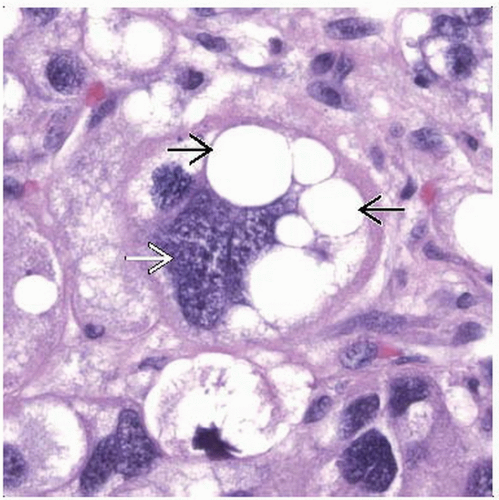Overview of Lipoblasts and Mimics
David R. Lucas, MD
 Lipoblasts come in a variety of sizes and shapes. The cytoplasm is filled with lipid that appears as 1 or multiple clean, punched-out vacuoles that indent and scallop the nucleus. |
LIPOBLASTS
Definitions
Lipoblasts are embryonic mesenchymal cells that develop into fat cells
Wide spectrum of cell morphology
Primitive spindle cells with small cytoplasmic vacuoles
Univacuolated or multivacuolated round cells
Signet ring cells
Neoplastic lipoblasts morphologically recapitulate developmental stages of lipogenesis
Malignant lipoblasts characterized by nuclear hyperchromasia and atypia
Peripheral crescentic nuclei
Multilobated nuclei
Multinucleated giant lipoblasts
Background
Lipoblasts are not required for diagnosing all types of liposarcomas
Atypical lipomatous tumor/well-differentiated liposarcoma
Lipoblast often present but not required for diagnosis
Defined by presence of atypical stromal cells
Myxoid/round cell liposarcoma
Highly variable numbers of lipoblasts present in a given tumor
Wide spectrum in appearance of lipoblasts
Univacuolated round cells, multivacuolated cells, signet ring cells
Pleomorphic liposarcoma
Identification of lipoblasts is required for diagnosis
Often contain very large pleomorphic and multinucleated lipoblasts
Lipoblasts sometimes sparse
Lipoblasts are not pathognomonic of liposarcoma
Lipoblasts can be found in benign tumors
e.g., lipoblastoma
e.g., lipoblastic nerve sheath tumor
Criteria for Identifying Malignant Lipoblast
Nucleus






